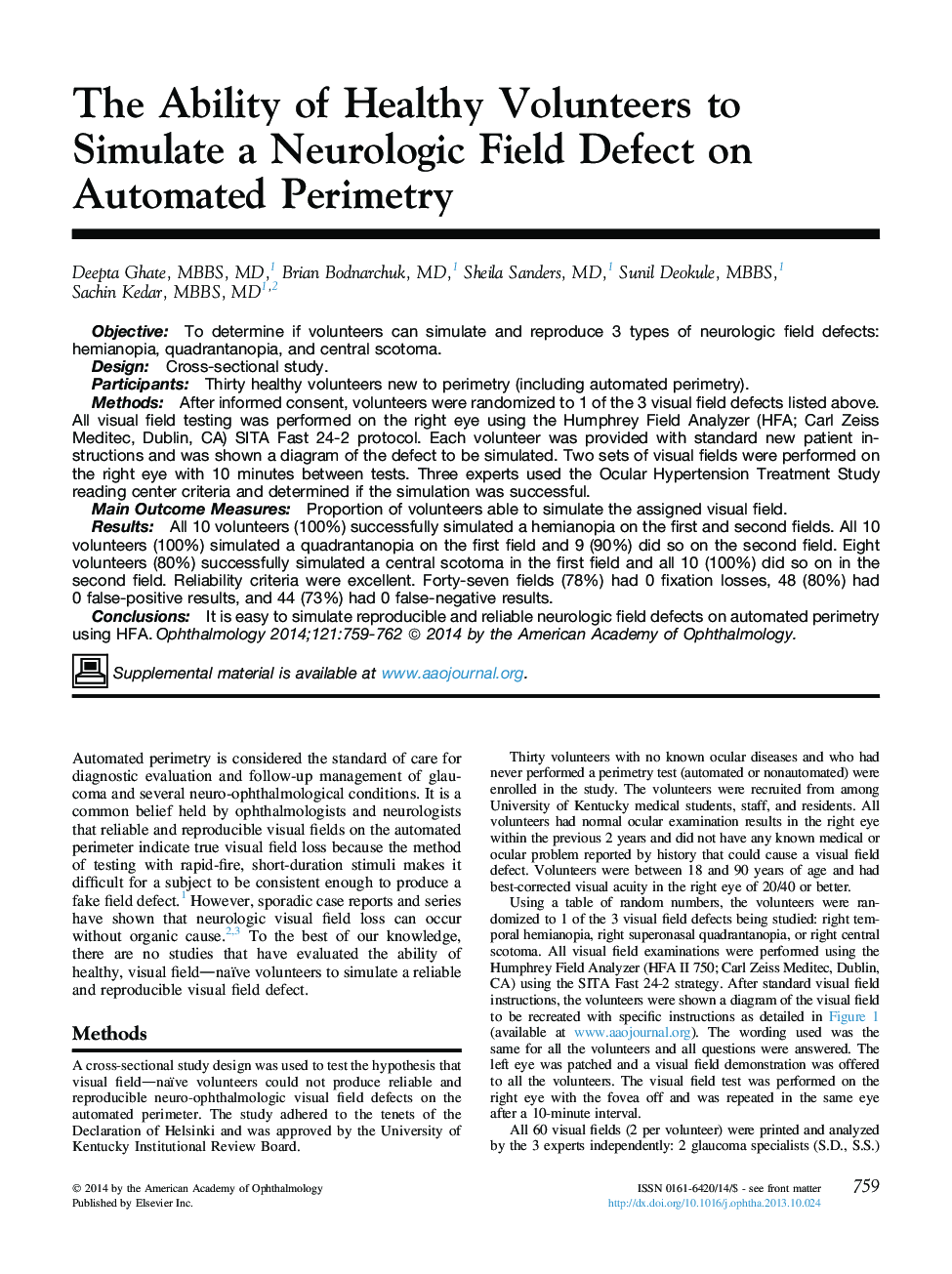| Article ID | Journal | Published Year | Pages | File Type |
|---|---|---|---|---|
| 4026176 | Ophthalmology | 2014 | 4 Pages |
ObjectiveTo determine if volunteers can simulate and reproduce 3 types of neurologic field defects: hemianopia, quadrantanopia, and central scotoma.DesignCross-sectional study.ParticipantsThirty healthy volunteers new to perimetry (including automated perimetry).MethodsAfter informed consent, volunteers were randomized to 1 of the 3 visual field defects listed above. All visual field testing was performed on the right eye using the Humphrey Field Analyzer (HFA; Carl Zeiss Meditec, Dublin, CA) SITA Fast 24-2 protocol. Each volunteer was provided with standard new patient instructions and was shown a diagram of the defect to be simulated. Two sets of visual fields were performed on the right eye with 10 minutes between tests. Three experts used the Ocular Hypertension Treatment Study reading center criteria and determined if the simulation was successful.Main Outcome MeasuresProportion of volunteers able to simulate the assigned visual field.ResultsAll 10 volunteers (100%) successfully simulated a hemianopia on the first and second fields. All 10 volunteers (100%) simulated a quadrantanopia on the first field and 9 (90%) did so on the second field. Eight volunteers (80%) successfully simulated a central scotoma in the first field and all 10 (100%) did so on in the second field. Reliability criteria were excellent. Forty-seven fields (78%) had 0 fixation losses, 48 (80%) had 0 false-positive results, and 44 (73%) had 0 false-negative results.ConclusionsIt is easy to simulate reproducible and reliable neurologic field defects on automated perimetry using HFA.
